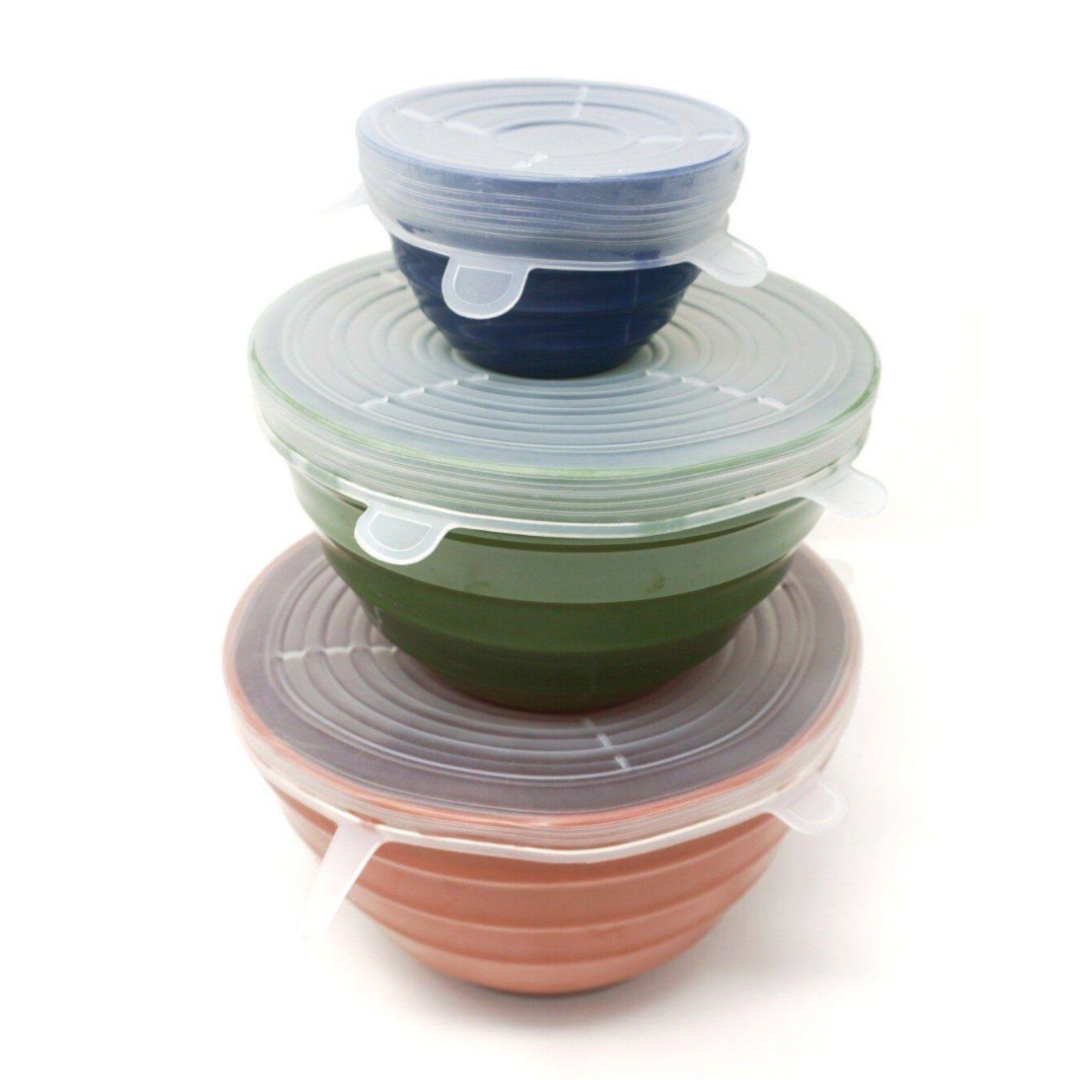
In July of 2019, I presented Zero Waste initiatives and recommendations to a recycling advocacy group from Dyer County, Tennessee. As I asked the audience to choose one activity to reduce and reuse, I thought to myself, “I need to do better. I need to walk my talk.”
What does it mean to walk my talk? To do as you say and say as you do.
You will see that my Zero Waste commitment is a journey with each decision making a change forward towards the goal. One of the biggest barriers to building new habits is product accessibility and traditional behavior. Starting is a decision that you need to make for yourself. Staying focused and forging a long-term commitment with yourself is hard. That’s why I’m going to share how I changed my behavior, the products I use in my home, and the products I recommend for your home and business.
Plastic wrap
This was a simple but surprisingly frustrating change to make. My frustration stemmed from trying and struggling to build new habits. In the beginning, I repeatedly reached for plastic film, grabbed it, and then stopped myself. For decades, I used plastic wrapping to cover food. Plastic wrap is still plastic waste. My commitment to Zero Waste meant no more plastic wrap.
Since I’ve decided to reduce and eliminate plastic waste from my home, my plastic wrap purchases with a press-on seal dropped significantly to just once or twice a year. Before the commitment, I purchased these liners once or twice a month.
Containers
Instead of using plastic wrap to store food, we transitioned to glass food containers and plate covers.
Our household prioritized reusable containers we already owned.

That’s one of the most important lessons to learn about Zero Waste: think about the disposal process at every stage of a product. Before you buy or invest in a new product, ask yourself what happens when you’re finished with the product. If the product you’re buying goes right in the trash after you’re done using it, consider an alternative to reuse over and over. It’s better for the environment and reduces landfill size. Thinking about waste might seem insignificant at first; it is actually a critical step to waste reduction.
Reusable silicone bags
I’m proud to say my 80-year-old Mother and I successfully reduced and eliminated using single-use gallon bags.

It’s easy to buy and use zippable quart or gallon bags. But now it’s just as easy to purchase and use reusable silicone bags at your preferred retailer.
My Mother uses her bags for just about anything, including bagging fish on her trips to the fish market, marinating meats, and storing vegetables.
I helped my mom by buying the silicone bags for her to reuse and stop the disposable purchasing, do you know someone who could use a helping hand to waste less?
Hand towels
Buy hand towels and phase out your dependence on paper towels. Reusable, washable towels, if maintained properly, are a much more sustainable choice than single-use paper products. Our household, before fully adopting hand towels, used about two paper towel rolls a month. Some households use much more. We still have paper towels in our home, but our family has made a significant reduction which I am very grateful for.
I’m delighted to say that instead of wasting two rolls a month, we’re slowly using about one roll every four or so months.
Challenges still to tackle
I've been married long enough to admit that relationships are hard. Sometimes, we are too tired and stressed to deal with one more thing—and that includes recycling correctly. This means I need to fish a few recyclables from the trash and wash them for proper recycling. I will keep educating and reinforcing smart reduce and reuse habits with all family members.
I need to be more consistent about bringing a container from home for restaurant leftovers. It’s a direct choice I have to make to reduce waste. I need a behavior trigger. I will add a lunch box with clean empty containers and place it near my purse or on the chair that is where I walk to my car.
However, not every effort to reduce waste is solely my choice. Sometimes, when we order takeout, restaurants deliver food in styrofoam containers. It’s wasteful and terrible for the environment. So, here are two things I plan to do: request biodegradable packaging and consider eating at an establishment that does not rely on styrofoam packaging for food.
And finally, Green365 is working with the Memphis Food Waste Project and Project Green Fork to make a more unified impact with the restaurants and other eatery establishments. The next time you’re going out to eat, look for the Project Green Fork logo on their front door.
Steady progress
As I reflect on my Zero Waste journey, I think about the Zero Waste hierarchy and the work our communities need to do to reach a sustainable circular economy. It's been over two years since I’ve recommitted to Zero Waste. I’ve worked hard to change my life for the better. Here is a list of changes I made in my life. What changes do you think you can make?
2018: swapped out wasteful home lighting for LED lights and began composting at home
2019: started commercial compost drop off, insulated my attic to save energy, and installed Alexa to shut off lights by command
2020: purchased a dishwasher that uses less water, installed a Nest thermostat, became a hybrid car owner, began carpooling my children
2021: led water waste advocacy in my neighborhood after a dangerous winter season and Installing solar panels for my home in September
As part of Compost Fairy, I worked on research projects to compare styrofoam and compostable per clamshell prices. Then with PGF, we became a task group to accomplish working on a discount for PGF members if they use compostables in order to compete with styrofoam prices.
My point is, this is an example of how I advocated and conducted the research behind a project.
As I reduced my waste in my own home, I made active steps to change my household’s behavior. Remember: positive reinforcement and phone alerts go a long way. Here are several other key tips to reduce and reuse:
- Don’t scold or yell. Instead, remind and encourage.
- Offer helpful tips and resources that educate and inform
- Work on recycling as a family or in the office as a team
- At the office, ask your employer if they can cover the cost of a weekly pick-up from a composting service and then bring your food waste from home to the office.
I’m a big believer in making changes one step at a time. Whether the changes are big or small, it counts as a win. Give yourself the chance to celebrate your small but meaningful decisions and actions. It makes the journey sustainable and the goals that much sweeter when achieved.
We do not need a handful of people doing Zero Waste perfectly. We need millions of people doing it imperfectly.
-Anne Marie Bonneau, Zero Waste Chef
What can you do to commit to Zero Waste?
As I helped my family members choose durable alternatives to keep food fresh and reduce waste, I slowly but surely changed their behavior for the better. And that is the ultimate goal: to create new, repeatable behaviors that form into sustainable steps toward a healthy community.
So, now you know some of my continuing journey to reach Zero Waste. It’s an imperfect process. But that doesn’t mean you can’t try to find ways to improve. How? Well, if you start with these four simple steps, you’ll be on the right track to reducing waste and being a positive influence in your community.
- Identify waste in your home, workplace, or community
- Identify ways to reduce waste and reuse products
- Implement behavior changes and keep each other accountable
- Reinforce and encourage healthier habits and reach Zero Waste

